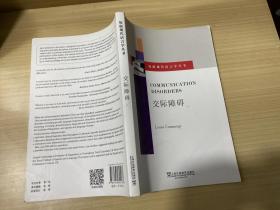
原版现代语言学丛书:句法理论(第二版)
¥ 43.39 6.0折 ¥ 72 全新
仅1件
山东泰安
认证卖家担保交易快速发货售后保障
作者Geoffrey Poole
出版社上海外语教育出版社
出版时间2017-01
版次1
装帧其他
货号R7库 12-12
上书时间2024-12-12
- 在售商品 暂无
- 平均发货时间 25小时
- 好评率 暂无
- 最新上架
商品详情
- 品相描述:全新
图书标准信息
- 作者 Geoffrey Poole
- 出版社 上海外语教育出版社
- 出版时间 2017-01
- 版次 1
- ISBN 9787544645171
- 定价 72.00元
- 装帧 其他
- 开本 16开
- 纸张 胶版纸
- 【目录】
-
List of Figures and Tables
Preface to the Second Edition
Preface to the First Edition
Acknowledgements
1 Introduction
1.1 The scientific study of language
1.2 The competence/performance distinction
1.3 Some simple approaches to grammaticality judgements
1.4 Language acquisition and universal grammar
1.5 Description and explanation: the case of structure-dependent rules
1.6 Introduction to the book
2 Phrase Structure and Constituency
2.1 A simple starting point
2.2 Constituency
2.3 The elements of a phrase-structure tree and their relations
2.4 Are two levels enough?
2.5 Constituency tests: more applications and case studies
3 X‘-Theory and Functional Categories
3.1 Introduction to X‘-Theory
3.2 Inside the XP
3.3 Functional categories
3.4 Coordination and X‘-Theory
3.5 Head-initial and head-final languages
4 θ-Theory and Case Theory
4.1 An introduction to argument structure
4.2 θ-roles
4.3 Morphological case
4.4 Morphological case vs abstract case
4.5 Exceptional case marking
4.6 The Case Filter
4.7 The visibility condition: an improvement on the Case Filter?
5 Introduction to Binding Theory
5.1 Anaphors and Principle A
5.2 Pronouns and Principle B
5.3 R-expressions and Principle C
6 Movement and Chains
6.1 Transformations: an introduction
6.2 Wh-movement: subjacency and successive cyclicity
6.3 More evidence for successive cyclicity
6.4 Subjacency and the analysis of relative clauses
6.5 More transformations: passive and raising
6.6 Levels of application of principles
6.7 Chains
7 Logical Form
7.1 Wh-movement in the LF component
7.2 Quantifier raising: another LF transformation
7.3 LF A-movement: expletive replacement
8 Empty Categories and Their Constraints
8.1 Binding Theory: a recap and (minor) reformulation
8.2 The Binding Theory status of DP-trace
8.3 The Binding Theory status ofwh-trace
8.4 The search for null pronouns
8.5 [+a, +p] revealed!
8.6 Interlude: a note on Plato‘s Problem
8.7 The Empty Category Principle
8.8 From government to proper government
8.9 Subjacency vs the ECP
8.10 Adjuncts and antecedent government
8.11 Summary of the ECP
8.12 Relativized minimality: an introduction
9 Towards the Minimalist Program: Clause Structure Revisited
9.1 The VP-internal subject hypothesis
9.2 More on the VP: double object verbs, VP-shells and light verbs
9.3 vP and Accusative Case assignment
9.4 From IP to TP
9.5 Rizzi (1997) and the ‘cartographic‘ approach to CP
10 Towards the Minimalist Program: Movement Revisited
10.1 The copy theory of movement
10.2 A movement analysis of control
10.3 Introduction to verb movement
Notes
References
Index
内容摘要
杰弗里·普尔著的《句法理论(第2版)/原版现代语言学丛书》为学习句法理论提供了清晰实用的介绍,还介绍了理论构建以及假说测评。第二版新增了最
简方案、辖约束原理等新内容。每章后附有练习和相关理论的详细树形图。本书供相关研究人员参考。
点击展开
点击收起
相关推荐
— 没有更多了 —

















以下为对购买帮助不大的评价